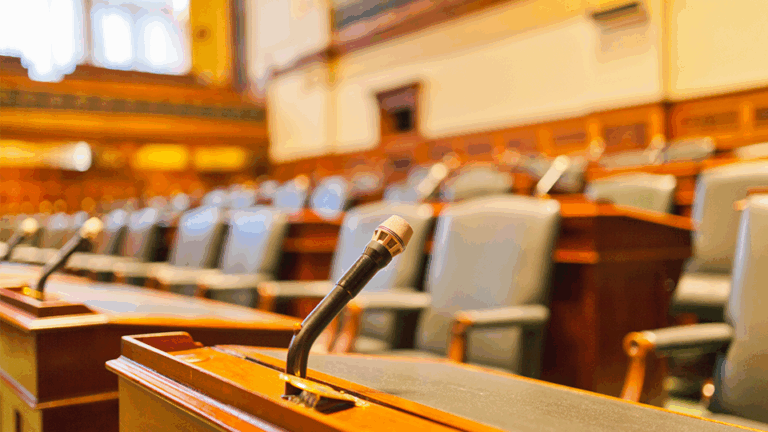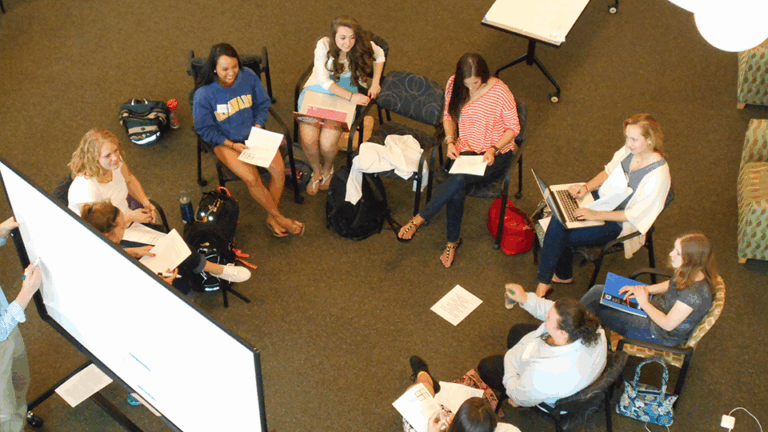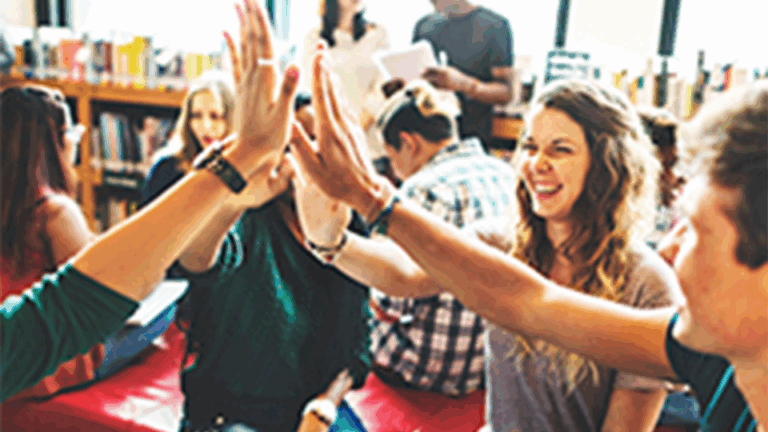By
Nancy Thomas, Tufts University
Jodi Benenson, University of Nebraska Omaha
Abstract
The higher education community has long accepted that colleges and universities serve two distinct but complementary purposes with respect to student development: academics educate students for individual prosperity and well-being and for public participation in democracy and civic life. Appropriately, both roles get recalibrated periodically based on societal needs – witness current shifts in credentialing, fields of study, online learning, and opportunities for people who have historically been left behind – all with the view to educating more Americans for the jobs of the future and for their personal economic security. This piece reflects on the evolving role of higher education in educating for democracy.
Keywords
political engagement

The higher education community has long accepted that colleges and universities serve two distinct but complementary purposes with respect to student development: Academics educate students for individual prosperity and well-being, and for public participation in democracy and civic life. Appropriately, both roles get recalibrated periodically based on societal needs—witness current shifts in credentialing, fields of study, online learning, and opportunities for people who have historically been marginalized—with the view to educating more Americans for the changing workforce and for their personal economic security.
Higher education’s civic mission is also undergoing scrutiny and revitalization, and to understand that recalibration, one must trace the last 70 years of the academy’s civic role. In 1947, horrified by the rise of Nazi Germany and the atrocities of World War II, President Truman established the Commission on Higher Education, which identified education as a “necessity” critical to “the foundation of democratic liberties.” The commission challenged higher education to cultivate educated citizens who would apply their “creative imagination and trained intelligence to the solution of social problems and to the administration of public affairs.” An expanded community college system, the GI Bill, the Civil Rights laws of the 1960s, and the growth in cooperative extension addressed this challenge and exponentially increased access to higher education.
Yet, 50 years later, educational and civic leaders began to question higher education’s commitment to civic life (Gamson, 1997) and opined that colleges and universities had “lost their sense of purpose” (Boyer, 1996). In 1997, the National Commission on Civic Renewal warned that the United States had become “a nation of spectators” in which people disengaged from their governments, from their communities, and from each other, a problem captured in the image of Americans
“bowling alone” rather than in leagues (Putnam, 2000). In a series of national dialogues on the role of colleges and universities in American society, civic leaders expressed concern that higher education institutions were not educating their “successors” (Thomas, 2001, p. 13), people with a concern for public affairs and a commitment to public service careers. Civic leaders worried that the disciplines overlooked their “public relevance” and lacked “place-based strategies” (p. 15). In 2000, Thomas Ehrlich published Civic Responsibility and Higher Education, a collection of essays by educators on higher education’s civic purpose. In this seminal book, Ehrlich framed higher education’s civic goal as “working to make a difference in the civic life of our communities and developing the combination of knowledge, skills, values, and motivation to make that difference” (Ehrlich, 2000, p. vi).
In response, colleges and universities bolstered valuable forms of civic learning: community-based partnerships, student service-learning, local research collaborations and public scholarship, study abroad and other forms of global learning, and campus efforts to encourage social responsibility, such as recycling programs. Yet, at that time, the culture wars raged, “social justice” was labelled a liberal agenda, and “political” became equated with “partisan.” Administrators undoubtedly wanted to avoid the turbulent and sometimes violent student uprisings of the 1960s. By framing student civic engagement as “working to make a difference in the civic life of communities,” higher education adopted socially acceptable and safe approaches to the development of students as citizens. As a result, self-selected students gain a sense of empathy for others, a commitment to serve, and even an interest in public service careers. The question remains, however: Are students applying the necessary “creative imagination and trained intelligence to the solution of social problems and to the administration of public affairs”?
One way to gauge student interest in public affairs is to examine the most basic form of democratic engagement: voting, an arguably objective measure of student concern with public affairs. Launched in 2013, the National Study of Learning, Voting, and Engagement (NSLVE)1 at Tufts University found that turnout among undergraduate and graduate students at participating institutions was 45% in 2012 and 18% in 2014. These voting rates were significantly lower than the average turnout in the U.S. during the presidential election of 2012 (60%) and during the midterm election of 2014 (42%). When further disaggregating the numbers at NSLVE institutions, the findings become even more concerning: Only 13% of 18- to 24-year-old college students voted in the 2014 midterm election, and at some institutions, student voter turnout was below 5%. These numbers should serve as a wake-up call to the academy to revisit how young people are educated.
There is also a difference between whether students vote and who votes, recognizing that disparities exist across groups. In 2015, Demos published a comprehensive review of voter participation to highlight “the significantly lower turnout rates among lower-income Americans and people of color compared to richer Americans and whites as a whole” (McElwee, 2015). Overall, nearly 80% of high-income Americans vote, compared with barely 50% of their low-income peers (Leighley & Nagler, 2014). The demographics of the nation’s elected officials reflect this dynamic. The median wealth for a member of Congress, about $1.1 million in 2014, far outpaces that of the typical American family, estimated at $56,355 in 2013. Voting disparities result in unequal representation, with White people holding 90% of the 40,000 elected positions from the federal to the county levels (Who Leads Us, 2014). Although more African, Hispanic, Asian and Native Americans serve in the 114th Congress than at any time in history, these numbers are increasingly disproportionate to U.S. demographics. Whites account for 83% of the new Congress but just 62% of the population. These patterns of underrepresentation have significant public policy consequences: Money in politics and a lack of empathy based on lived experiences exacerbate the disconnect between elected officials and the people they ostensibly serve. Colleges and universities should be concerned with not only whether their students vote, but which students vote, and work to correct disparities by race and ethnicity, and socioeconomic status.
This Issue: Educating for Democracy
When the eJournal of Public Affairs published the call for articles for this special issue, the editors were not sure how the issue would shape up. Because of our time spent in the field conducting research on politically engaged campuses, we envisioned an issue that would be part scholarship, part reflection, and part concrete tools. The authors lived up to those expectations. This issue consists of 10 scholarly articles and reflection pieces on the scope of educating for democracy, barriers to educating for democracy, and ways to overcome those barriers.
The issue begins with two articles on political learning and engagement, exploring the role of student affairs and assessment of student affairs activities in higher education. Authors Demetri Morgan (Loyola University Chicago) and Cecilia Orphan (University of Denver) warn that students must develop agency to understand and address systems that perpetuate power disparities and political inequality, lest the movement be “relegated to volunteerism and stopgap service.” They argue that this challenge rests with senior student affairs officers (SSAOs) on campuses. Their qualitative study examined how socialization influenced the ways in which SSAOs approached student civic development. Study participants pointed to their gender, socioeconomic, racial, and sexual identities, along with their life experiences with politics, as integral to their understanding of how to shape student co-curricular learning experiences. The study participants also highlighted the challenges of reducing partisanship and maintaining “political neutrality” (and avoiding student unrest) as significant to political learning. As one participant explained, “You have to be Switzerland,” emphasizing her role as impartial facilitator and the need to model a healthy democratic process.
Indeed, new assessment tools have emerged to help student affairs staff and faculty mentors encourage student groups to build their “civic muscles” by practicing democratic decision making. Cherie Strachan (Central Michigan University) and Elizabeth Bennion (Indiana University South Bend) present the first findings from the National Survey of Student Leaders, an assessment tool designed to measure the degree to which student organizations develop students’ civic skills and political efficacy, and identify room for improvement in these aspects of student life. The tool seeks to provide higher education institutions with the means to regularly assess whether their version of “campus civil society” promotes the priorities of recent higher education reform.
The next three articles examine initiatives and practices that address how to educate for political citizenship and engagement on college and university campuses. Timothy Shaffer (Kansas State University) draws from his relationship with the Kettering Foundation and The Democracy Imperative to design a course around the theory and practice of deliberative democracy. In addition to co-creating the syllabus with his students, he grounded their learning in their biographical statements. Students learned to plan, organize, and conduct deliberative forums using the National Issues Forums Institute approach, one that can be used as a pedagogical tool by faculty across disciplines.
Stephen Hunt, Kevin Meyer, John Hooker, Cheri Simonds, and Lance Lippert (Illinois State University) examine the effects of the Political Engagement Project (PEP) on students’ political outcomes. PEP began in 2007 as the American Association of State Colleges and Universities partnered with the Carnegie Foundation for the Advancement of Teaching and The New York Times to enhance political efficacy and a sense of civic duty among undergraduates. To achieve this goal, PEP campuses integrate political education and engagement into a variety of disciplines and undergraduate courses on campuses. Hunt and colleagues conducted a quasi-experiment to infuse this pedagogical approach into an introductory communications course to examine outcomes related to student political knowledge, efficacy, general interpersonal skills, skills of influence and action, political behavior, concern for political issues, and political ideology. The study findings suggest that political engagement pedagogy can complement other pedagogical strategies to enhance disciplinary knowledge and influence key student learning outcomes.
Windy Lawrence (University of Houston-Downtown [UHD]) and John Theis (Lone Star College) combine their communication and political science expertise to explore and measure student growth resulting from organizing and facilitating two-hour deliberations on “wicked” policy questions during Houston’s Citizenship Month. One interesting finding: Students broadened their understanding of political engagement beyond voting and electoral engagement to include deliberative dialogue as a model for self-governance and democratic engagement. This article may also be valuable to readers interested in exploring structures for community-based problem solving, in this case, a Center for Public Deliberation (UHD) and a Center for Civic Engagement (Lone Star-Kingwood).
Next, Abe Goldberg (University of South Carolina Upstate) provides a vision for the kind of political learning and engagement called for by the Truman Commission. He makes a compelling case for examining political engagement through the lens of students with diverse social identities and life experiences, particularly those with low socioeconomic status who are, according to the research, less likely to engage in politics. USC Upstate serves a large low-income constituency (44% of the students receive Pell grants) with a range of progressive and conservative perspectives which can divide along racial lines. Institutions like USC-Upstate, Goldberg argues, are uniquely positioned to advance political equality through community engagement, political classroom discussion, and attentiveness to the well-being of students.
Elections at all levels of government provide a context for enhancing students’ political learning and serve as opportunities to foster political knowledge, skills, and attitudes. Elizabeth Matto (Rutgers University) reflects on elections as “teachable moments” and shares ways she has used primaries and elections as springboards for political learning in the classroom and on campus. She describes her use of readings, discussion, reflection, and experiential and project-based learning to facilitate laboratories of democracy in her classroom.
As mentioned earlier, one of the responses to the Truman Commission report was the exponential expansion of the community college system. Currently, nearly half of U.S. college students attend community colleges, and the number of community college students that continue their education and graduate from four-year institutions continues to grow. By any standard, these students represent a crucial constituency for the health and sustainability of democracy. The next article details the results of a study by three leaders among community colleges: Carrie Kisker (independent researcher), John Theis (Lone Star College), and Alberto Olivas (Arizona State University, previously of the Center for Civic Participation at the Maricopa Community College system). In this study, the authors examined how community college educators viewed their role as civic educators, the challenges they faced, and how they engaged students in democratic learning. As in the two previous articles, the authors identify deliberation in the classroom or across the student experience as critical to democratic education in large part because deliberation allows and encourages students to see themselves as having a strong political voice, essential to democracy.
Higher education’s civic responsibility is not just to educate for political learning and engagement, but for political agency and equity. The final two reflections in this issue are shared by student leaders themselves who discuss two pressing issues affecting colleges today: racial equity and immigration. Callie Watkins Liu (Brandeis University) draws on her experiences during the 2015 Ford Hall student protests at Brandeis University. She identifies structural patterns in resistance and counter-resistance around racially centered student activism, and examines how institutional amnesia and narrative framing can be used to protect the interests of power at higher education institutions. Matias Ramos (Tufts University) reflects on his time as an undocumented student at the University of California Los Angeles and stresses the critical role college campuses play in creating transformative experiences for students in an increasingly multicultural world. He details his first encounter with fellow activists, describing their impact on his leadership development and how students around the country took part in a movement that led to executive changes in federal immigration policy.
We are grateful to these authors for their contribution to this issue and the field. While this issue is being published during a rather unusual presidential election season, the tools and institutional attributes described in the articles will help to facilitate political learning and democratic engagement long after the election of 2016. We hope that colleges and universities are using this provocative election season to develop habits of intergroup discussion, to learn about and experience U.S. governance systems, to study how each academic discipline offers expertise relevant to public policy making, to correct misinformation and critique unethical conduct, and hold elected officials and candidates accountable. The future and health of democracy depends on how well colleges and universities educate “to the solution of social problems and to the administration of public affairs.”
References
Bishop, B. (2008). The big sort: Why the clustering of like-minded America is tearing us apart. New York: Houghton Mifflin.
Boyer, E. (1996). The scholarship of engagement. Journal of Public Service and Outreach, 1(1), 11-20.
Ehrlich, T. (2000). Civic responsibility and higher education. Westport, CT: American Council on Education and Oryx Press.
Gamson, Z. (1997). Higher education rebuilding civic life. Change, 29, 10-12.
Leighley, J., & Nagler, J. (2014). Who votes now? Demographics, issues, inequality, and turnout in the United States. Princeton, NJ: Princeton University Press.
Mathews, D. (2009). Afterword: Ships passing in the night. In D. Barker & D. Brown (Eds.), A different kind of politics: Readings on the role of higher education in democracy (pp. 93-104). Dayton, OH: Kettering Foundation Press.
McElwee, S. (2015). Why voting matters: Large disparities in turnout benefit the donor class. New York: Demos. Retrieved from http://www.demos.org/publication/why-voting-matters-large-disparities- turnout-benefit-donor-class
President’s Commission on Higher Education for Democracy. (1947). Higher education for democracy: A report of the President’s Commission on Higher Education (Vol. 1). Establishing the goals. New York: Harper Collins.
Putnam, R. D. (2000). Bowling alone: The collapse and revival of American community. New York: Simon & Schuster.
Thomas, N. L. (2001). Cultivating successors: Guidance from the field. Higher Education Exchange, 13-24. Retrieved from https://www.kettering.org/sites/default/files/product- downloads/HEX2001_0.pdf
Who Leads Us. (2014). Do America’s elected officials reflect our population?
Retrieved from http://wholeads.us/electedofficials
Author Biographies
 Nancy Thomas directs the Institute for Democracy and Higher Education at the Jonathan M. Tisch College of Civic Life at Tufts University. Her work and scholarship center on higher education’s democratic mission, college student political engagement, free speech and academic freedom, and deliberative democracy on campuses and in communities. She is the author of multiple book chapters, articles, and the monograph, Educating for Deliberative Democracy, an issue of Jossey Bass’ New Directions for Higher Education series. She is an associate editor of the Journal of Public Deliberation and a senior associate with Everyday Democracy. She received her bachelor’s degree in government from St. Lawrence University, a law degree from Case Western Reserve University, and a doctorate from the Harvard Graduate School of Education.
Nancy Thomas directs the Institute for Democracy and Higher Education at the Jonathan M. Tisch College of Civic Life at Tufts University. Her work and scholarship center on higher education’s democratic mission, college student political engagement, free speech and academic freedom, and deliberative democracy on campuses and in communities. She is the author of multiple book chapters, articles, and the monograph, Educating for Deliberative Democracy, an issue of Jossey Bass’ New Directions for Higher Education series. She is an associate editor of the Journal of Public Deliberation and a senior associate with Everyday Democracy. She received her bachelor’s degree in government from St. Lawrence University, a law degree from Case Western Reserve University, and a doctorate from the Harvard Graduate School of Education.

Jodi Benenson is an Assistant Professor in the School of Public Administration at the University of Nebraska Omaha. Her primary research interests include social policy, nonprofit organizations, civic engagement, and inequality. Previously, Jodi was a Postdoctoral Research Fellow at the Jonathan M. Tisch College of Civic Life at Tufts University. At Tufts, she worked on several projects in the areas of youth civic engagement, political learning and engagement in higher education, and national service and employment. Jodi received a B.S. and M.P.A. from Indiana University and a Ph.D. in social policy from the Heller School for Social Policy and Management at Brandeis University.


